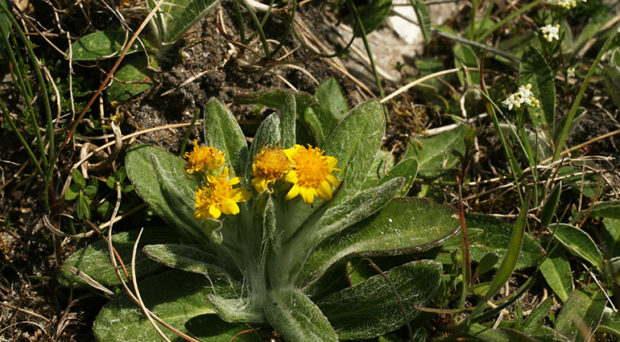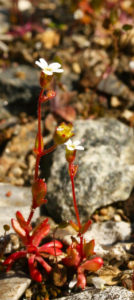
Plants’ battle for a private sphere
Unlike humans, plants are in constant battle for survival with their neighbours. They battle for food and energy much like in the principle of the survival of the fittest theory. Who wins this battle is a matter of who performs best under the circumstances that prevail in just that tiny little spot on which the battle takes place. In recent years more and more evidence point to microtopography as being a main factor influencing this battle. Microtopography, described as “organism-sized” small variations in the height, aspect, slope and roughness of the ground, affect where different plant species grow in a local landscape. The effects of microtopography on where plant species grow is most clear in wet and saline environments (see example here). However, it becomes more and more apparent that microtopography is also an important factor for structuring plant communities in the more dry environments, such as grasslands.
Water brings life and so much more

Microtopography in itself is actually not important to plants at all! Plants do not really care whether they grow 20 or 40 cm above sea level or on patches facing north or south. On the contrary what they do care about is the immediate environment and microclimate created by these microtopographical positions.
Elevation differences of just a few decimetres can cause dramatic changes in soil moisture, nutrient availability, salinity, pH, the microbial community, and other factors important for plants to thrive. It is highly likely that multiple different mechanisms underlie how microtopography alters the local environment, that again impacts the battle among plants for resources and energy which ultimately affects the structure and composition of the plant communities we observe in the field. However, these mechanisms and how they interact are still poorly understood.
I recently led a study comprising a large vegetation database and 258 European temperate wet and dry grasslands. Here, we found that the small variations in topography had a clear impact on how plant species were distributed within grasslands. From our results it was apparent that microtopography played this role mainly because it exerts control on how the soil moisture varies locally within each grassland – also in the dry ones. That soil moisture is a main component affecting where plant species grow in local patches – even in dry habitats – is gaining more and more support (see an overview in this review). The importance of water for plant life is a well-known veracity. However, that hydrology generally affects even relatively dry plant communities at these small spatial scales (i.e., ranging over a few meters) and seems to be a key component in that sense is fairly new to science.
Laser guns and biodiversity patterns
BLAAM, BLAAM, BLAAM – well, maybe there’s no sound notable to the human ear when laser beams hit. That is probably why most people don’t know that it happens more and more often throughout the globe. Whooooaa! Is it dangerous? No, not at all! The laser shooting is part of a relatively new technology called light radar (aka lidar). Without getting into much detail on how lidar works, it enables us to record topographic and vegetation structural data in very fine resolutions (for each quarter square-meter in a landscape for example) while at the same time covering huge areas. Several countries such as Denmark, the Netherlands, etc. now have national coverage.
Our study on how microtopography affects the appearance of plants in local grassland patches is a good example of the immense opportunities lidar data give us. We already learned a lot from applying lidar in ecological studies but there is still so much more to learn and the technology and the precision of available data just keeps getting better.
So what next?
We need more studies to shed light on how microtopography affects local environments and how this again forms the very local biodiversity we observe: plants, fungi, animals. Particularly, light (that is, laser of course) needs to be cast on the more intriguing and complex relationships between microtopography and the local soil microbial communities, light and temperature as well as wind disturbance and how these natural elements again shape the local biodiversity.
Throughout the globe researchers aim to understand biodiversity, just for curiosity, but also to understand the world we live in and to enable proper management of nature in a shifting environment. We just took one step towards this by starting to use lidar to disentangle how microtopography affects the battles of plants.
We’re in the lidar-era now and I am confident that it will bring much more new knowledge about nature!
Read full journal article: Topographically controlled soil moisture drives plant diversity patterns within grasslands
Jesper Erenskjold Moeslund
Latest posts by Jesper Erenskjold Moeslund (see all)
- Small steps for man, giant leaps for plants - 15th July 2016